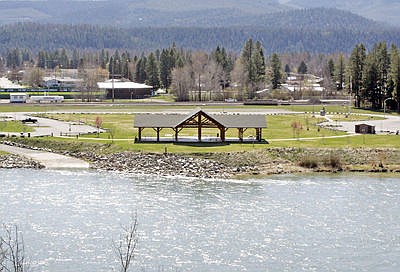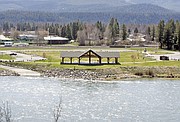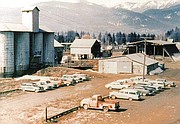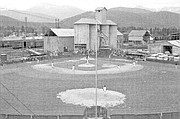From toxic waste to Nirvana
Libby area yoga instructor Danielle Spillman, who teaches a morning yoga class in Libby’s Riverfront Park, characterizes the park and its views as “awe-inspiring.”
“When I started practicing and teaching at Riverfront Park, my yoga and meditation practice changed dramatically,” Spillman said. “I spent my time stopping and listening and really, truly looking at the wonders that are right in front of me. When I take the time to do this first thing in the morning, it changes everything about my day and it’s a very different kind of meditation. It is not about disconnecting with my surroundings. It is not about turning off my senses to be able to go deep within. Its about connecting with myself, in my surroundings and allowing my senses to be heightened. Feeling that I am both observer and part of it all. It is truly awe-inspiring.”
Looking at the park today, as the sunrise colors the waters of the Kootenai River, one would be hard-pressed to believe it was once one of the most contaminated toxic sites in U.S. history. But it was.
Just a few short years ago the area now occupied by the park and the Fred Brown Pavilion were part of Operable Unit One in the parlance of the Environmental Protection Agency, the first stage of the active clean-up operations of the Libby Asbestos Superfund Site. The property, once the home of the W.R. Grace & Company mill, was surrounded by piles of asbestos-contaminated vermiculite. It was also home to the local baseball fields, with children running, sitting and playing in and around the deadly toxin. The EPA completed cleanup of the park area in 2011, more than 12 years after initially becoming involved in Libby.
“EPA completed cleanup work at the area now known as Riverfront Park in August 2011,” said project manager Rebecca Thomas. “The area was one of EPA’s early priorities since W.R. Grace used the property to stockpile, stage and distribute vermiculite to processing areas and insulation distributors outside of Libby. EPA’s Emergency Response Team began investigating the area in 1999 and a series of short-term cleanups called removals began in 2001 that involved excavating contaminated soil and debris, demolition of old buildings and a road, and covering the area with clean top soil and vegetation.”
The park is now home to a number of events during the year, from morning yoga to harvest fairs and the Riverfront Blues Festival. Residents enjoy picnics, walks and all sorts of recreational activities in the pavilion and on the surrounding grounds. There is even a boat launch into the Kootenai River for those so inclined.
Spillman said she is grateful for the opportunity to be able to practice her yoga in such a beautiful place.
“After holing myself up in the yoga studio all fall and winter, it feels so refreshing to take this practice outside,” she said. “When I walk outside, it’s natural to connect my breath to the movements of my body, it’s easy to be mindful, and it’s automatic to plug into the goodness underneath all the mind stuff. My students and I always end the class feeling so grateful for our surroundings and grateful for this place we get to call home.”
Thomas said the transformation of Riverfront Park is a testament to the vision and commitment of Libby residents, and she looks forward to more such successes in Libby.
“It was a rare opportunity for EPA to work with a community with the vision and dedication to create Riverfront Park from a Superfund site,” she said. “The collaboration among EPA, the city, county and community members resulted not only in a clean property, but also in reuse as a park that benefits the entire community. We look forward to more success stories as Libby moves to the next chapter.”







